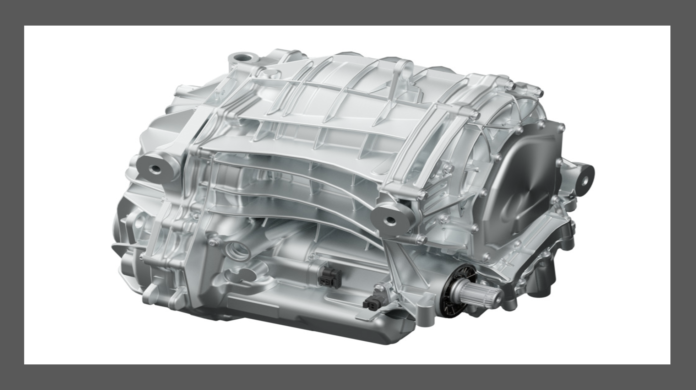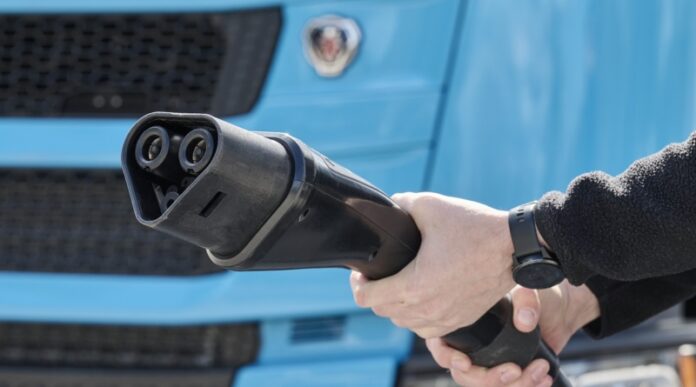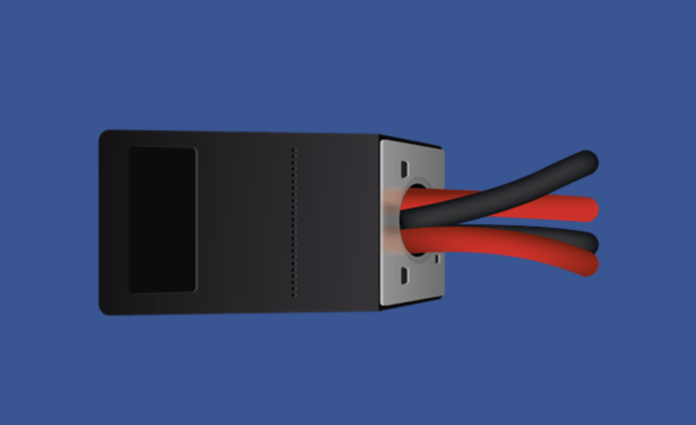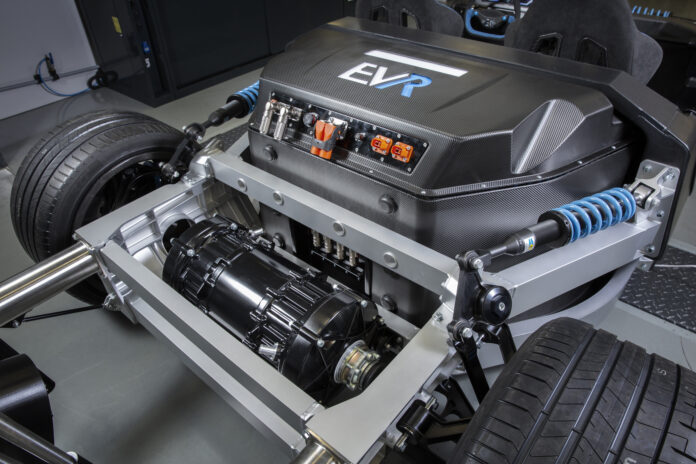After the first 2023-quarter, Volvo Trucks drives the market of electric vehicles both in Europe and in North America. In all, the Swedish manufacturer of trucks has sold almost 5,000 electric trucks in about 40 Countries. At present, its range of electric products is available in new markets such as Asia, Latin America and Africa.
During the first 2023-quarter, 600 electric vehicles overall, weighing 16 tons and more, were registered in Europe: a 4-time increment versus the same 2022-period (134).
“Our commitment to a sustainable transport is clearly giving its fruits. We are willing to work in strict contact with our customers to decarbonize the transport on truck”, stated Roger Alm, President of Volvo Trucks.
Volvo Trucks scored a great increase of orders of new vehicles during the first 2023-quarter. 486 electric trucks overall were ordered, which represents the 141% rise in comparison with the same 2022-period. Most of these orders come from North Europe Countries, including the Netherlands, Germany, Norway and Sweden.
Volvo Trucks: increasing orders of heavy-duty electric vehicles
New Magna motor will equip the cars of a Europe-Based Global OEM
eDS Mid by the Canadian Magna manufacturer is a compact high-speed electric motor that offers a range of scalable power from 100 kW to 140 kW, optimized for 800 V. As high-voltage eDrive system for electric AWD applications, it allows a fast reconnection through a new uncoupling system and provides a high-efficiency inverter with silicon carbide (SiC) technology that shares in the best efficiency, driveability and safety of the category.
Recently, the company has announced that its new electric motor intended for the medium-range has been ordered by a premium European automotive company.
The eDS Mid motor has been designed for medium-size electric cars, then it is likely to be used for compact sedans and for medium/small range SUV.
UK: testing the first Zero-Emission Hydrogen-Electric heavy vehicle
The British startup HVS – Hydrogen Vehicle Systems has recently announced the development of the first heavy-duty vehicle powered by hydrogen and manufactured in the United Kingdom. In these days, they have invited fleet operators to register the expressions of interest to try out its hydrogen electric heavy vehicle (HGV) before buying.
The supported tests will start in the fourth quarter of 2025, once completed the exhaustive pre-production prototyping phase and once heavy vehicles will be ready for the mass-production in the United Kingdom.
The vehicle has been shown in its prototyping configuration: it announces around 600 km of autonomy and refuelling times of about 20 minutes, a datum that would make it rank at the top of its category.
Jawad Khursheed, CEO of HVS said: “In response to the huge levels of interest we have received from fleet operators we are inviting them to register expressions of interest in trialling our Hydrogen Goods Vehicle on the HVS website. “We understand the challenges of introducing disruptive technology such as zero-emission trucks to the logistics sector, so we will be offering extensive trials to fleet operators so they can thoroughly evaluate the technology and understand how it will perform within their fleets before they purchase our vehicles, which will help them achieve their environmental targets.
Hydrogen is the perfect fuel for the haulage industry, offering long range and quick refuelling thanks to stations being easily integrated into existing key transport networks, and we’re keen to help prospective customers learn all about this exciting technology.”
Automation for the handling and assembly of the electric motor
Due to the collaboration between companies, Statec, expert in the sector of electric motors’ windings, and Weber, specialized in the sector of the technology of the fastener assembly automation, have created an interesting solution of optimal automation for the handling and assembly of the electric motor.
The automated line, fully designed and developed by Statec, allows the electric motor handling while the assembling phase of the threaded component is implemented by SEV automated self-powered screwdriver with Weber vacuum technology.
Weber has announced this new achievement, springing from a partnership aimed at “making complex things simple”.
ABB E-mobility and Scania, together for the Megawatt Charging System
Next-generation Scania electric truck has completed the first recharge test with the Megawatt Charging System (MCS) by ABB E-mobility. It is a milestone in the development of an efficient high-power solution for heavy-duty vehicles.
The test will lead to the progressive distribution of high-power chargers, with current starting from 1,500 Amperes, up to the 3,000 Amperes of the MCS system. It is a recharge standard in which both Scania and ABB E-mobility have hugely invested, in collaboration with CharIN.
MCS technology is fundamental for long-haul trucks: the vehicle can be driven for 4.5 hours maximum before the driver must mandatorily stop for at least 45 minutes: during this short interval, the truck must charge enough energy to grant an autonomy for other 4.5 hours of use.
Starting from the current year, Scania will be able to offer trucks with MCS connector upon specific demand, whose production is scheduled since 2024. ABB E-mobility will introduce the next upgrade of its MCS technology from the end of 2024 to the beginning of 2025.
Fredrik Allard, Head of E-mobility of Scania affirmed: “We are living an upswing time for the electric transport, moreover, we foresee that in 2030 electrified solutions will constitute 50% of our yearly sales. To hit this target, the infrastructure will be necessary and the MCS is a crucial piece of the puzzle to build the future”.
Emilio, the electric boat for the transport of goods, has arrived in Venice
Emilio is the first zero-impact boat of the large distribution in Venice lagoon. The new boat with electric motor has become part of the fleet of Coop Alleanza 3.0 and will take care of provisioning the brand’s stores. Emilio has been manufactured by S.ca Snc Trasporti Marittimi Veneziani. Able to fulfil all functions of goods loading, transport and unloading in the supplied Coop stores, the new boat is equipped with a battery that can rely on three hours of autonomy during which it grants zero emissions. Thanks to the electric motor, able to decrease significantly both consumptions and the emissions of carbon dioxide, about 39 tons of CO2. will be spared yearly. Moreover, Emilio is fully self-rechargeable.
What advances with Energy Management Module technology?
The rising manufacturer of electric vehicles Mullen Automotive has announced the results of the tests carried out on the technology recently taken over by a joint venture, which notably improves the current performances of the EV, increasing their autonomy. The Energy Management Module (“EMM”) technology substantially increases the autonomy and the efficiency of any present EV battery. The specific tests executed by Element on a large-size OEM electric vehicle have led to a calculated autonomy increase from 269 to 431 miles, corresponding to a 60% efficiency increment.
Furthermore, the EMM technology has been tested by Mullen Automotive engineers on the EV Cargo van in Class 1 of the company by the factory at Troy, Michigan. The results have shown an autonomy increase exceeding 75% for the 42-kWh lithium-ion battery pack, which corresponds to an autonomy estimated by EPA of 186 miles, with very low additional cost and mass. An application of temporary patent for the technology has been registered.
“Seeing the previous EMM test results conducted by Element, along with Global EVT testing, and correlating that with testing by our engineers, we believe this technology is a perfect fit for Mullen’s EV product lineup as well as the advancement in EV technology for the overall automotive industry,” said David Michery, CEO and chairman of Mullen Automotive. “Mullen Advanced Energy Operations plans on licensing this technology to anyone who uses an electric vehicle.”
A platform for hypercars and smart system for batteries
The latest technological news by WAE – Williams Advanced Engineering -concern two innovations. The first is inherent to the launch of Elysia: Pioneering Battery Intelligence to unlock the potential of all electric vehicles. Elysia brings on the mass market revolutionary information, the management and the optimization of batteries, from the automotive, commercial vehicle and electric mobility sectors to the stationary energy storage and more, freeing the potential of the battery component. Elysia offers integrated products based on forefront clouds that together supply customers, including automotive OEMs, fleet operators and battery asset financiers, with the access to information about batteries and the capability of managing, optimizing and improving the performances during the battery’s whole lifecycle, in both the vehicle and in “second life” applications such as the stationary network storage. Another novelty by WAE is the latest iteration of WAE EV platforms, EVR is focused on the growing electric hypercar sector, with a lightweight composite structure that mounts the high-performance battery system in the middle of the vehicle, optimising centre of gravity.
EVR can support a range of electric hypercar configurations, from track-only vehicles where power-to-weight is maximised to roadgoing models, both open-roof Targa and fixed-roof GT architectures. This is made possible by the architecture’s central tub which has been designed from day one to allow for such flexibility, including open roof design, while still featuring the very latest performance technology such as active aerodynamics.
Loccioni opens the doors to future engineers
One of the key components that in the future will allow the large-scale transition to the electric mobility is the electric axle. Loccioni has embraced this new adventure by developing Axenon, a test bench for e-axle technologies that perform the functional product test at line end, simulating the wheels’ behaviour in different scenarios and collecting data about quality, reliability and performances of each single e-axle. A preliminary assumption to frame a small part of the activity of Loccioni, which has recently hosted the students of the advanced course in Human Centric Engineering SITUM Alumni, who have been guided in a tour through the various work ambits and the current and future opportunities connected with the electrification process.
Important was the contribution by the University of L’ Aquila, which has joined the Polytechnic University of Marche and the University of Perugia in the development of SITUM, because it catches the attention on electrification and its future developments.
The visit in Loccioni laboratories has shown the concreteness of this transition to students. Besides injectors, common rails, pumps and endothermic motors, now inverters, batteries and electric motors must be tested. Even power modules, with SIC semiconductors, core of the electric motor, are the new components of electric vehicles. In addition to e-mobility, in Loccioni there is a lot on show in the front of smart buildings: all 6 laboratories are connected in a micro-grid, 100% electric, whose energy flows coming from renewables are managed by a smart system.
ElevenEs establishes the first manufacturing plant of LFP battery cells in Europe
The production site, located in Subotica, Serbia, specializes in producing high-quality LFP prismatic cells which are shipped to customers for sample A and B testing across a variety of applications, including electric cars, buses, trucks and energy storage systems.
The LFP cell market is expected to see significant growth in the coming years, with over nine-fold growth in global sales over the past two years alone, and is forecasted to be the number one battery cell chemistry utilized by the end of this decade.
This comes as no surprise, as LFP battery cell chemistry offers greater safety, lower cost, and increased sustainability since the technology does not utilize nickel or cobalt. LFP battery cells also last three times as long as the most common competing technologies, making them the most cost-efficient battery solution on the market. Along with the overall benefits of LFP chemistry, ElevenEs’s EDGE battery cells offer higher energy density on a pack-level compared to other LFP cell designs.
In addition to their focus on providing high-quality LFP cells, ElevenEs has implemented a range of initiatives to promote sustainable production, including the use of renewable energy sources for facility operation, a combination of hydro, wind and solar power.
The company also plans to source all the necessary active materials from Europe which will limit the carbon footprint of the LFP battery cells produced.
The opening of the manufacturing facility represents a significant step forward for ElevenEs. The industrial facility will expand to become the company’s Mega-Factory in 2024, producing 500MWh, focusing, but not limited to, C and D samples. ElevenEs’s roadmap includes operating two Gigafactories: Giga-I producing 8GWh by 2026 and Giga-II producing 40GWh by the end of 2027. At which point, the company will operate at a combined capacity of 48GWh – which equates to enough battery cells to power one million medium-sized electric cars each year.










